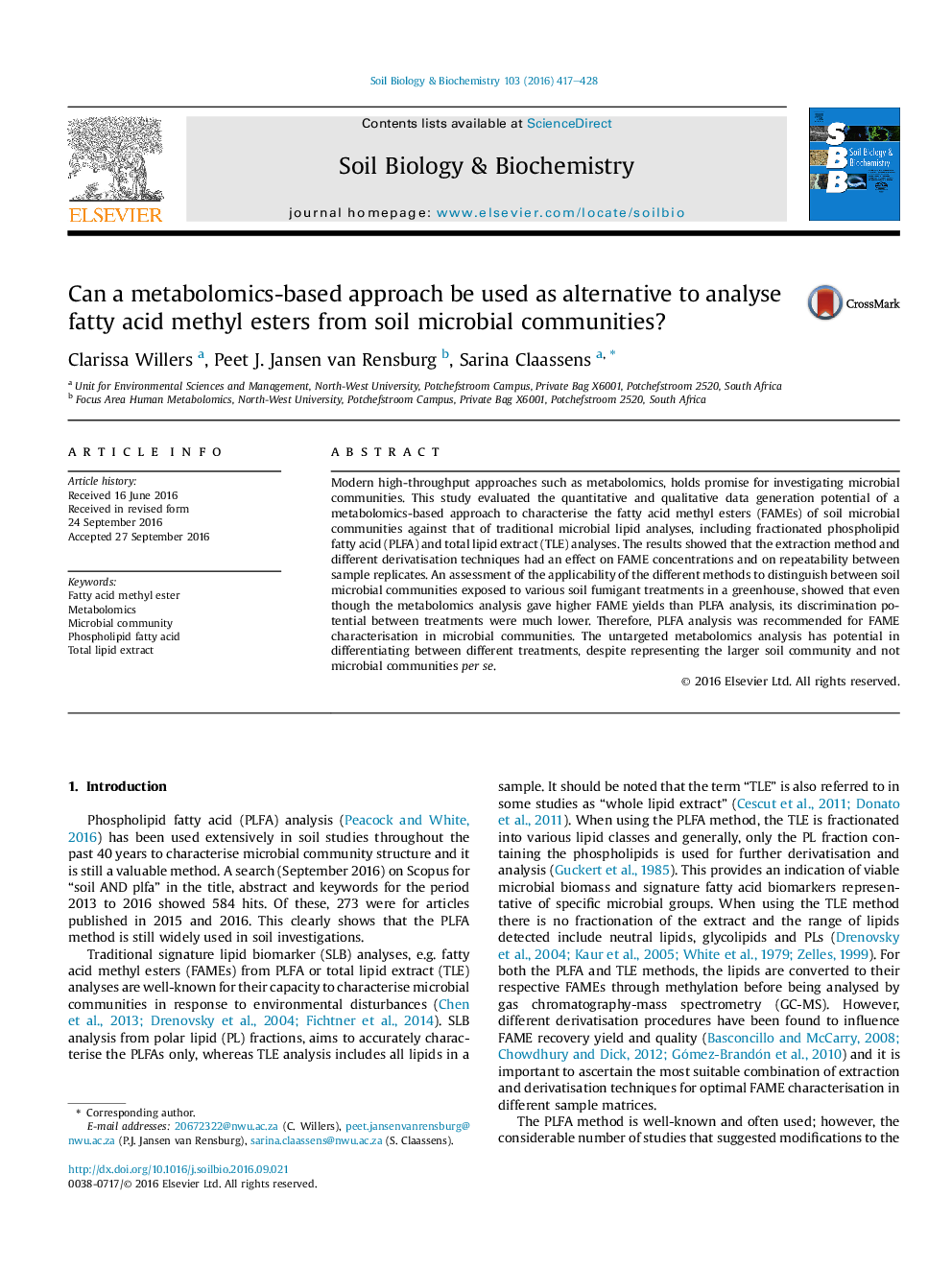| Article ID | Journal | Published Year | Pages | File Type |
|---|---|---|---|---|
| 8363335 | Soil Biology and Biochemistry | 2016 | 12 Pages |
Abstract
Modern high-throughput approaches such as metabolomics, holds promise for investigating microbial communities. This study evaluated the quantitative and qualitative data generation potential of a metabolomics-based approach to characterise the fatty acid methyl esters (FAMEs) of soil microbial communities against that of traditional microbial lipid analyses, including fractionated phospholipid fatty acid (PLFA) and total lipid extract (TLE) analyses. The results showed that the extraction method and different derivatisation techniques had an effect on FAME concentrations and on repeatability between sample replicates. An assessment of the applicability of the different methods to distinguish between soil microbial communities exposed to various soil fumigant treatments in a greenhouse, showed that even though the metabolomics analysis gave higher FAME yields than PLFA analysis, its discrimination potential between treatments were much lower. Therefore, PLFA analysis was recommended for FAME characterisation in microbial communities. The untargeted metabolomics analysis has potential in differentiating between different treatments, despite representing the larger soil community and not microbial communities per se.
Keywords
Related Topics
Life Sciences
Agricultural and Biological Sciences
Soil Science
Authors
Clarissa Willers, Peet J. Jansen van Rensburg, Sarina Claassens,
